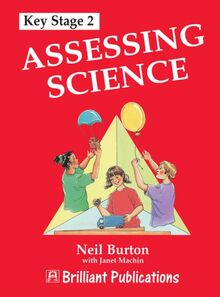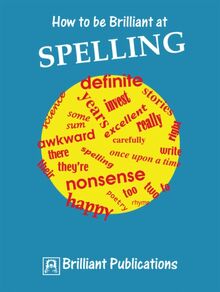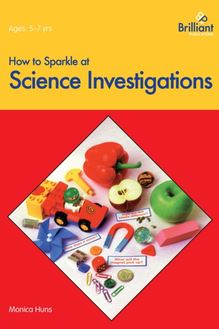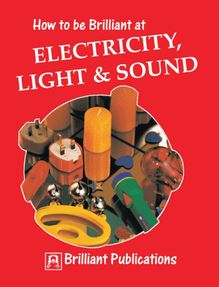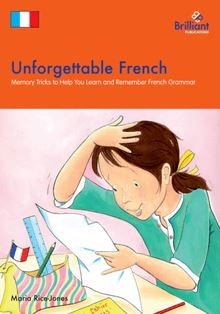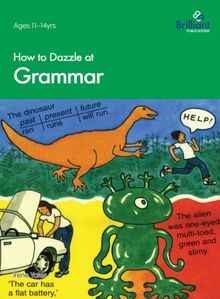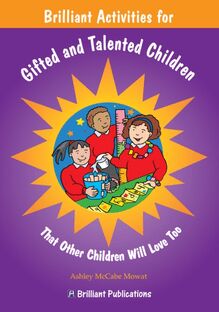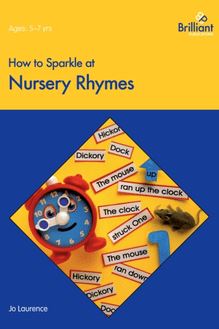Assessing Science at KS2 , livre ebook
121
pages
English
Ebooks
2012
Vous pourrez modifier la taille du texte de cet ouvrage
Obtenez un accès à la bibliothèque pour le consulter en ligne En savoir plus
Découvre YouScribe en t'inscrivant gratuitement
Découvre YouScribe en t'inscrivant gratuitement
121
pages
English
Ebooks
2012
Vous pourrez modifier la taille du texte de cet ouvrage
Obtenez un accès à la bibliothèque pour le consulter en ligne En savoir plus
Publié par
Date de parution
22 novembre 2012
Nombre de lectures
0
EAN13
9780857475442
Langue
English
Publié par
Date de parution
22 novembre 2012
Nombre de lectures
0
EAN13
9780857475442
Langue
English
Title page
ASSESSING SCIENCE
Key Stage 2
Neil Burton
with Janet Machin
Copyright page
Published by Brilliant Publications,
Unit 10,
Sparrow Hall Farm,
Edlesborough
Dunstable,
Bedfordshire,
LU6 2ES, UK
Tel: 01525 222292
E-mail: info@brilliantpublications.co.uk
Website: www.brilliantpublications.co.uk
The name Brilliant Publications and the logo are registered trademarks.
Written by Neil Burton with Janet Machin
Illustrated by Virginia Grey and Kate Ford
Cover illustration by Virginia Grey
© Neil Burton and Janet Machin 1998
First published in 1998, reprinted 2005.
2012 digital version by Andrews UK Limited
The right of Neil Burton and Janet Machin to be identified as authors of this work has been asserted by them in accordance with the Copyright, Designs and Patents Act 1988.
Certain indicated sections may be printed/photocopied by individual teachers for class use, without permission from the publisher and without declaration to the Publishers Licensing Society. The materials may not be reproduced in any other form or for any other purpose without the prior permission of the publisher.
Introduction
The aims of the book are twofold: to encourage the children to think and record their knowledge and understanding in a variety of ways; to enable teachers to gather evidence from which assessments can be made.
Assessing Science is not a complete scheme of work, but it will supplement and support whatever science scheme is being used. It is designed to be highly compatible with National Curricula throughout the United Kingdom, and that of England and Wales in particular. References relate to the Programmes of Study for the English National Curriculum.
The Qualifications and Assessment Authority (QCA) recommends that judgements regarding level descriptions are made as a result of an accumulation of work. The completed sheets provide a useful record and can be kept and used (along with other work) as a basis for assessing the children’s level of attainment.
It is important to ensure that the targets set for the children are sufficiently challenging to allow the children to demonstrate their abilities. It is not uncommon for children to be given a teacher assessment lower than might be expected - not though, due to a lack of ability, but because of a lack of opportunity. Children need to be asked the right question to be able to give the right answer.
Generally, the ‘Potential assessment activities’ on the teachers’ pages give children the opportunity to demonstrate their ability to work in the level description range 2-5. Each set of activities is designed to be progressively more challenging.
Making best use of the book
The book is structured with teachers’ pages and photocopiable masters (PCMs) facing each other. You are strongly recommended to read through the teachers’ pages before using the PCMs, to ensure that you choose the sheet that most closely matches the learning objectives you have set for the children.
Teachers’ pages
The information is structured under the following headings: National Curriculum focus
The National Curriculum references have been written out in full for your convenience. Assessment objective
The assessment objective of the PCM is closely linked to the National Curriculum focus. Potential assessment activities
Additional, related activities which can be used to assess children’s knowledge and understanding. Assessment outcomes
These are linked to the ‘Potential assessment activities’. Example of a child’s response
The examples have been typed to make them easier to read. Every child is different but these examples are designed to give a general indication of what might be expected from more able children. Key vocabulary
Definitions can be found in the Teachers’ glossary of scientific terms at the end of the book.
Photocopiable masters
Some of the PCMs are deliberately open-ended, enabling you to use your professional judgement to provide an appropriate stimulus. Other PCMs offer the opportunity to engage in challenges which will establish the child’s level of understanding. Finally there is a selection of sheets, including key making, tabulating and grouping, which focus on particular skills within particular contexts.
Suggestions are given on some of the teachers’ pages of ways of adapting the PCMs to allow for differentiation (eg by deleting certain sections before photocopying). You are encouraged to find your own ways of adapting the sheets further. It is recommended that you make your modifications on a photocopy of the sheet, so as to keep the original sheet intact.
The PCMs can be used: before teaching to identify the existing level of understanding of the children in order to match their needs accurately; as a support and stimulus for practical work, to help children to structure their thinking; after your teaching to assess the children’s learning (before and after is often quite enlightening - it will give a very good indication as to the effectiveness of your teaching); with a variety of group sizes, from whole class to individuals.
Sc1: Scientific enquiry
Showing what I understand about a process - Teacher’s page
National Curriculum focus
Sc1/1a
that science is about thinking creatively to try to explain how living and non-living things work, and to establish links between causes and effects;
Sc1/2b
consider what sources of information, including first-hand experience and a range of other sources, they will use to answer questions.
Assessment objective
The children should demonstrate their understanding of a particular scientific process.
Potential assessment activities
Assessment outcomes
Through discussion (group or class), children examine a process that has been identified (preferably by them) and attempt to explain how they think it works. They summarize their discussion on the PCM.
The explanations that children give should at least be consistent with the available empirical evidence.
On the PCM children write (and draw as appropriate) about how they think some scientific process works (eg evaporation, germination, human respiration, etc).
Children should identify where this information originated from (eg book research, practical investigation, TV, general observation, etc).
Children should be able to communicate their ideas effectively.
Using the PCM children design an activity (investigation or observation) to test out their ideas. (This could be done in groups.)
Children should, where appropriate, identify and isolate variables in the design of a practical activity.
Example of a child’s response
I have been thinking about what happens when ...
photosynthesis happens in green plants.
This is what I think happens:
Carbon dioxide goes into the leaves from the air through tiny holes. It mixes with a green substance called chlorophyll. When the sun shines on the leaf it gives energy to the chlorophyll which makes the carbon dioxide break up into carbon and oxygen. The oxygen goes back into the air and the carbon is used to make the plant grow bigger.
The reason I think this is because ...
I know that plants are made up of carbon. When you burn wood you get charcoal. We eat plants to get carbohydrates.
I could check that I’m right by ...
finding a book about plants in the library and reading what it says about photosynthesis.
Showing what I understand about a process
Name
Date
I have been thinking about what happens when ...
This is what I think happens:
The reason I think this is because ...
I could check that I’m right by ...
This is what I know about ... - Teacher’s page
National Curriculum focus
Sc1/1a
that science is about thinking creatively to try to explain how living and non-living things work, and to establish links between causes and effects;
Sc1/2b
consider what sources of information, including first-hand experience and a range of other sources, they will use to answer questions.
Assessment objective
The children should demonstrate their knowledge of a particular area of science and explain how they have obtained this knowledge.
Potential assessment activities
Assessment outcomes
Children write (and draw as appropriate) on the PCM about the ‘important’ things they know concerning a particular science topic (eg magnetism, rocks, pond life, etc).
Children should identify relevant important points.
Through discussion (group or class), children identify the information they know about a topic and identify ways in which it could be checked. They use the PCM for recording.
Children should identify where this information originated from (eg book research, practical investigation
